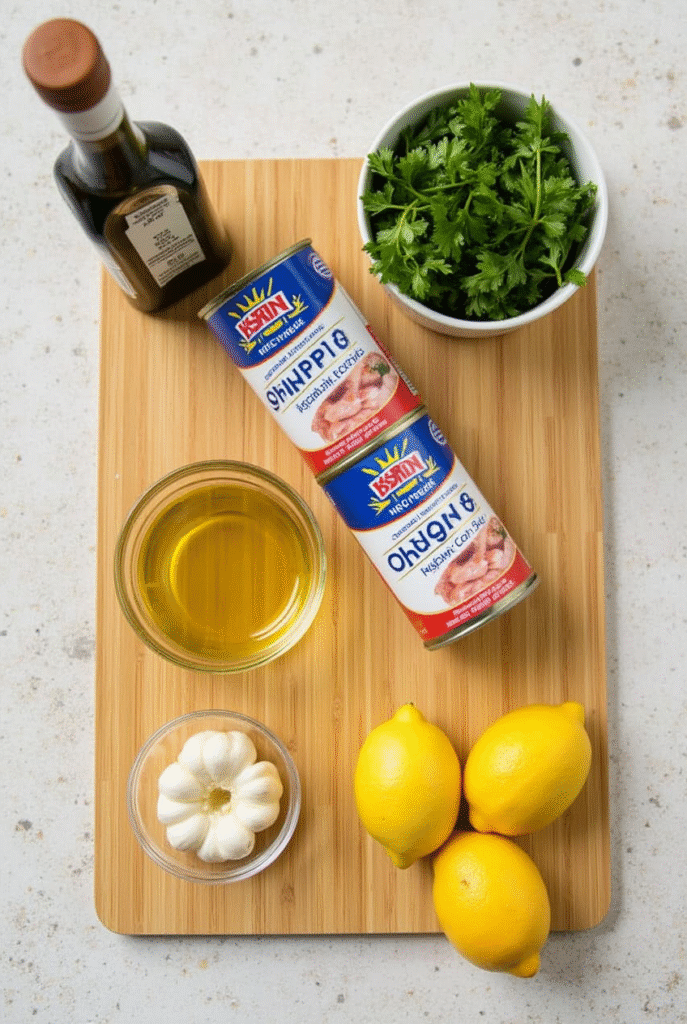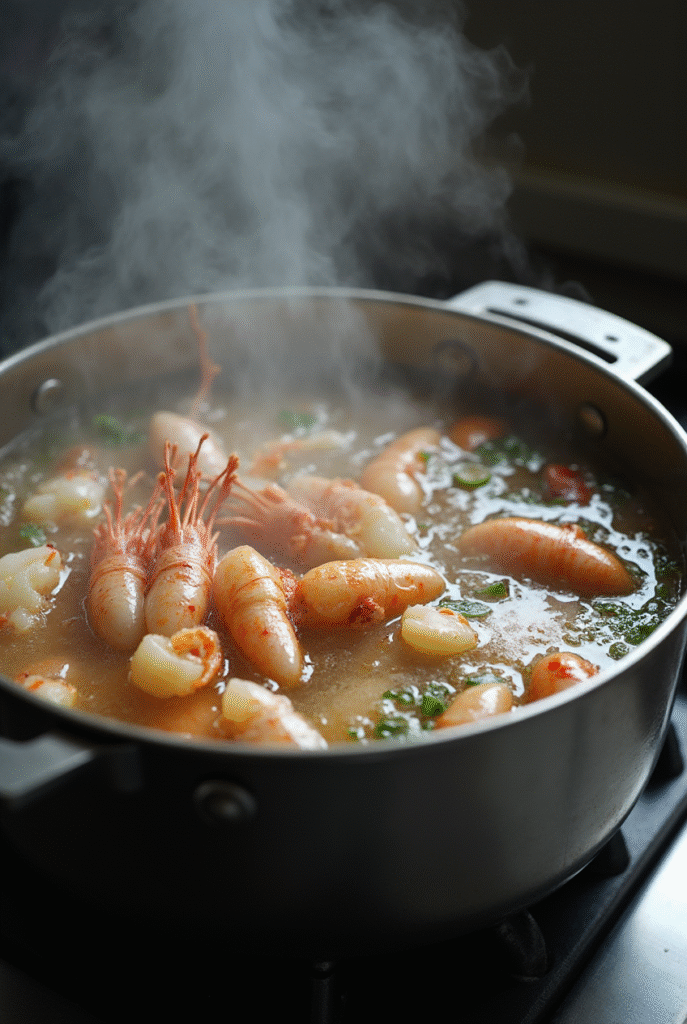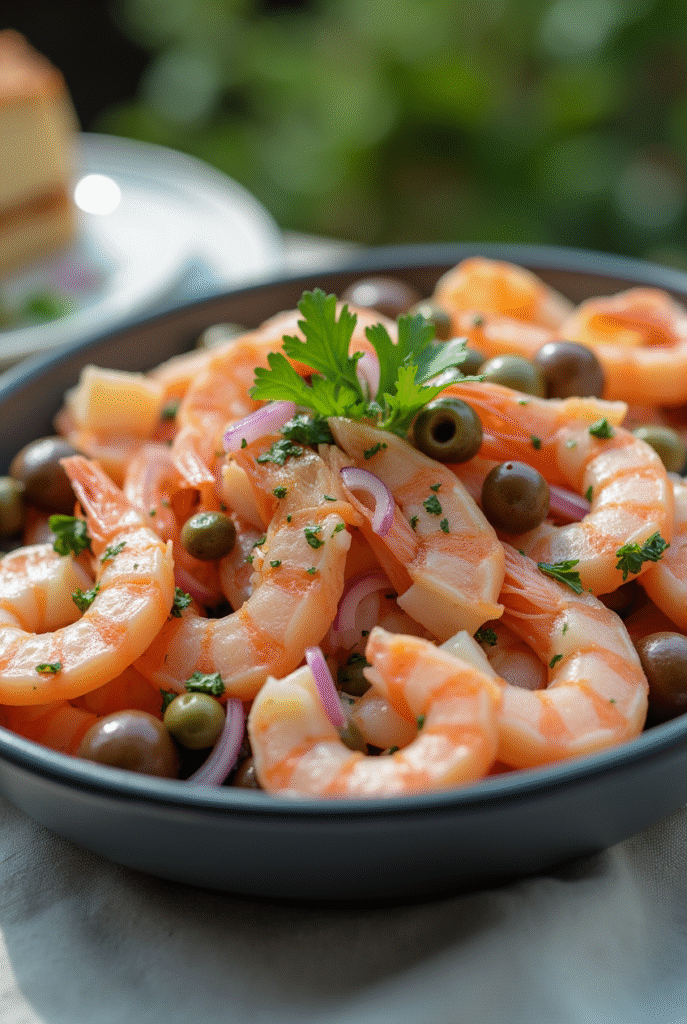There’s a reason why coastal Italian cuisine holds such a special place in the hearts of seafood lovers. Above all, dishes like this classic scungilli recipe stand out—not just for their flavor, but for their connection to tradition. Whether served chilled in a zesty salad or gently warmed in a garlicky sauce, scungilli brings the taste of the ocean right to your table. In this guide, we’ll walk through what scungilli is, how to work with it (both canned and fresh), and how to make an unforgettable Italian seafood dish at home.
What Is Scungilli? (Understanding the Ingredient)
Scungilli is the Italian name for a type of sea snail—specifically, a marine mollusk called whelk. Though not as mainstream as shrimp or crab, it has been a staple in Italian-American homes for generations. Its tender, chewy texture and mild ocean flavor make it an ideal base for lemony dressings, fresh herbs, and hearty sauces.
Notably, scungilli is rich in protein and low in fat, making it a great option for health-conscious home cooks. While some may compare it to conch, scungilli has a firmer bite and a saltier flavor, particularly because it’s often prepared in brine.
In many households, scungilli makes an appearance during the holidays, particularly at Christmas for the Feast of the Seven Fishes. For instance, you might find it served in a seafood antipasto or paired with spicy tomato sauce over pasta.
Moreover, canned scungilli has become increasingly popular. It’s pre-cooked and ready to use, which eliminates the need for long prep times. This makes it ideal for weeknight meals when you want something different but don’t have hours to spend cooking.
Dishes like this are not only flavorful but also closely related to other Italian seafood specialties. For example, if you’re a fan of bold, seafood-forward dishes, you’ll probably love our exquisite lobster bisque with saffron infusion, which features similarly rich, briny flavors elevated with aromatic spices.
Table of Contents
Ingredients & Instructions for Classic Scungilli Salad Recipe
For those new to working with scungilli, this simple cold salad is a great place to start. It’s light, refreshing, and comes together quickly. It’s also versatile—you can serve it as an appetizer, side dish, or even a light lunch.

🧂 Ingredients Table
| Ingredient | Amount | Notes |
|---|---|---|
| Canned scungilli | 1 lb | Drained and sliced |
| Lemon juice | 3 tbsp | Freshly squeezed for brightness |
| Garlic | 2 cloves | Finely minced for flavor |
| Olive oil | 1/4 cup | Extra virgin preferred |
| Fresh parsley | 2 tbsp | Chopped for color and freshness |
| Red pepper flakes | 1/2 tsp | Optional, adds a subtle heat |
| Salt & pepper | To taste | Always season to your preference |
Additionally, you can add thin slices of red onion or a few capers for extra punch. These optional ingredients enhance the brininess and offer more texture to the dish.

🔪 Step-by-Step Instructions
1. Prepare the Scungilli
Firstly, open your can of scungilli and rinse it under cold water. This removes excess brine and ensures a cleaner taste. Then, slice the meat into thin rings for even texture in the salad.
2. Make the Marinade
Secondly, combine the lemon juice, minced garlic, olive oil, parsley, and red pepper flakes in a medium bowl. Whisk thoroughly until everything is emulsified and fragrant.
3. Toss and Marinate
Thirdly, add the sliced scungilli to the bowl. Toss gently until the pieces are evenly coated. Season with salt and pepper, then refrigerate the mixture for at least 1 hour. This allows the seafood to absorb all the fresh, zesty flavors.
4. Serve and Enjoy
Lastly, serve the salad chilled. Garnish with extra parsley or a wedge of lemon if desired. You can enjoy it alone or as part of a seafood platter with other dishes like shrimp cocktail, grilled calamari, or a light pasta.
A dish like this pairs wonderfully with crusty bread and a chilled white wine. It’s perfect for summer picnics or as a refined appetizer at your next gathering.
For a more robust seafood experience, consider pairing this salad with heartier dishes such as our Thai coconut curry mussels, which offer rich spice and creaminess in every bite.
How to Prepare Fresh Scungilli (Step-by-Step Guide)
If you’re fortunate enough to find fresh scungilli at a fish market, take the opportunity to make this dish from scratch. Although it takes more time and effort, the taste is well worth it.
1. Cleaning the Scungilli
To begin, rinse the scungilli under cold water to remove sand and grit. Because they often come in shells, you’ll need to crack them open with a seafood mallet. After that, carefully pull out the meat and cut away any tough or discolored parts.
2. Boiling for Tenderness
Next, bring a large pot of salted water to a boil. Add the cleaned scungilli along with aromatics like bay leaves or peppercorns. Boil for about 60–90 minutes, checking for tenderness every 15 minutes after the one-hour mark.
3. Cooling and Slicing
Once tender, remove the scungilli and let it cool. Then, slice it thinly just like the canned version. At this point, it’s ready to be tossed into your marinade or cooked further in warm dishes.
4. Use or Store
If you’re not using it right away, store the prepared scungilli in an airtight container with a little olive oil and lemon juice. It’ll keep in the fridge for up to three days, allowing you to use it across different meals.
When preparing scungilli fresh, cleanliness is vital. Always make sure all parts of the snail are thoroughly cleaned and boiled. While the process may sound daunting, it’s really no harder than boiling clams or mussels—and it yields amazing results.
What Can I Do with a Can of Scungilli? (Creative Serving Ideas)
Using canned scungilli doesn’t mean you’re limited to just salads. In fact, it opens the door to several creative and flavorful dishes that go beyond the traditional.
1. Toss It into Pasta
One of the simplest ways to elevate a quick meal is to add sliced scungilli to a garlic and olive oil pasta dish. Add red pepper flakes, fresh parsley, and a splash of lemon juice, and you’ve got a five-star plate in under 20 minutes.
2. Make a Seafood Medley
Another option is to mix scungilli with other canned or fresh seafood like octopus, shrimp, or squid. Add capers, olives, and cherry tomatoes, then dress it all with olive oil and vinegar for a Mediterranean-style antipasto.
3. Build a Seafood Bowl
If you’re into meal prepping, consider building seafood bowls. Combine brown rice, scungilli, avocado, cucumber, and a lemony vinaigrette. It’s healthy, filling, and absolutely delicious.
4. Scungilli on Toast
Unexpectedly, scungilli works great on toast! Mix it with herbs and mayo or Greek yogurt, then serve it over toasted sourdough for a seafood spin on the classic tartine.
Many of these ideas take inspiration from coastal Italian kitchens but adapt well to modern meal trends. What’s more, because canned scungilli is pre-cooked, it fits effortlessly into fast recipes that don’t sacrifice taste or quality.
Common Mistakes to Avoid When Cooking a Scungilli Recipe
Mastering a scungilli recipe doesn’t require professional skills, but it does call for attention to detail. Often, minor missteps can significantly affect texture or flavor. Fortunately, by understanding the common pitfalls, you can prepare a dish that’s both authentic and delicious every time.
Overcooking the Scungilli
Firstly, overcooking scungilli is one of the most frequent mistakes. Because canned scungilli is already cooked, applying additional heat can turn it rubbery. Therefore, when adding it to hot dishes, always warm it gently and briefly. Likewise, if you’re using fresh scungilli, simmer instead of boiling it aggressively.
Additionally, using a timer is helpful. Boil fresh scungilli for 60 to 90 minutes, but always check the texture every 15 minutes after the one-hour mark. The meat should be tender yet firm—not mushy or tough.
As a matter of fact, many first-timers assume more cooking equals more flavor. However, in the case of scungilli, less is definitely more.
Underseasoning the Dish
Secondly, scungilli’s naturally mild flavor means it can get lost if underseasoned. Consequently, a bold, balanced dressing is essential. Ingredients like fresh lemon juice, garlic, olive oil, and chopped parsley highlight scungilli’s briny richness without overwhelming it.
Additionally, if your marinade lacks salt or acidity, the seafood may taste bland. Always taste and adjust the seasoning before serving. You might be surprised how a squeeze of lemon or a dash of sea salt transforms the dish.
Moreover, learning to season boldly is what separates good seafood from great seafood. Other popular recipes, like our lemon butter garlic shrimp pasta, follow a similar principle—simple ingredients elevated through confident seasoning.

Not Letting the Flavors Marinate
Furthermore, another overlooked step is insufficient marination time. Even a 30-minute rest allows the flavors to meld. Still, one hour is better, and overnight is best. Marinating in the refrigerator also improves food safety and texture.
For those with busy schedules, marinate your salad the night before and let it develop while you sleep. Then, serve chilled the next day for a stress-free appetizer or light meal.
Pro Tips & Variations for Your Scungilli Recipe
Once you’ve nailed the basics of a scungilli recipe, it’s time to experiment. Exploring variations helps you discover new ways to highlight this unique seafood ingredient. Therefore, whether you’re cooking for yourself or impressing guests, these tips can make your dish shine.
Top Tips for Flavor and Texture
1. Use Fresh Ingredients Always:
As much as possible, opt for fresh garlic, parsley, and lemon. Pre-bottled lemon juice lacks the brightness and acidity that fresh juice offers. Likewise, dried herbs can’t replace the aroma of chopped parsley.
2. Slice Evenly for Better Presentation:
Consistent slicing ensures even absorption of flavor and a better mouthfeel. Accordingly, use a sharp knife and aim for 1/4-inch slices.
3. Chill on a Bed of Ice Before Serving:
For elevated presentation and safety, serve your marinated scungilli salad over crushed ice, especially for outdoor events.
4. Add a Crunch Element:
Chopped celery or fennel adds a refreshing crunch. This contrasts beautifully with the chewiness of scungilli.
Creative Variations to Explore
1. Scungilli Bruschetta:
Top toasted baguette slices with scungilli, diced tomatoes, basil, and lemon vinaigrette. This makes for an elegant starter.
2. Scungilli Pasta:
Toss with linguine, cherry tomatoes, garlic, and white wine for a complete meal. Remember to add the scungilli last to avoid overcooking.
3. Spicy Scungilli Tacos:
Wrap marinated scungilli in corn tortillas with avocado, pickled onion, and spicy mayo. This fusion twist is a hit at summer parties.
4. Warm Scungilli in Tomato Sauce:
Sauté the sliced scungilli briefly, then add to simmering tomato sauce with olives and capers. Serve over crusty bread or pasta.
Title: Coastal Kitchen Ambience
Alt Text: Italian kitchen scene with seafood salad ingredients.
Description: A warm and inviting rustic kitchen layout showing ingredients and a finished seafood dish, perfect for recipe storytelling.
5. Add to a Cold Seafood Platter:
Pair with calamari, shrimp, and octopus in a citrus vinaigrette. Use herbs like dill and parsley for a fresh finish.
Not only do these ideas keep meals interesting, but they also showcase the incredible versatility of the scungilli recipe. You’ll find that once you get creative, the possibilities feel endless.
FAQs About Scungilli Recipe
What is scungilli made of?
Scungilli is made from marine snails, primarily large sea snails called whelks. These shellfish are cleaned, boiled, and sliced before use. In Italian-American cuisine, they’re served chilled in salads or warmed gently in sauces.
How to prepare scungilli?
To prepare canned scungilli, rinse it and toss it in marinade or warm sauce. For fresh scungilli, you must clean it thoroughly and simmer it until tender. After cooling, slice and use it just like the canned version.
Title: Glazed with Flavor
Alt Text: Macro shot of marinated seafood in olive oil.
Description: A detailed macro image capturing the glossy texture of marinated seafood with herbs and citrus elements.
What can I do with a can of scungilli?
Besides salad, canned scungilli can enhance pasta, seafood bowls, bruschetta, or tacos. Its precooked nature makes it quick and versatile.
What’s the difference between conch and scungilli?
Though both are sea snails, conch is typically sweeter and more common in Caribbean cooking. Scungilli has a firmer texture and a saltier flavor, making it ideal for Italian dishes.
Can you freeze cooked scungilli?
Yes, you can freeze it in an airtight container. Use within three months for best results. Thaw in the fridge and avoid refreezing once thawed.
Is scungilli healthy?
Absolutely. It’s low in fat and high in protein. Additionally, it contains important minerals like iron and magnesium.
Where can I buy scungilli?
Look for canned scungilli at Italian specialty stores or online. Fresh scungilli is harder to find but may be available at seafood markets or ethnic groceries.
Can I use scungilli in warm dishes?
Certainly. Add it to pasta, risotto, or soups. However, add it at the last minute to avoid overcooking.
Conclusion: Experience the Heart of Italian Seafood with a Scungilli Recipe
Scungilli is more than just seafood—it’s a flavorful journey into Italian culinary tradition. Whether you use it in salads, pasta, or inventive fusion dishes, this humble sea snail can elevate any meal.
From selecting high-quality ingredients to mastering the marinade, every step in this scungilli recipe offers a new opportunity to connect with centuries of coastal cooking. Moreover, it fits beautifully into modern kitchens, balancing flavor, health, and ease.
For more delicious inspiration beyond this scungilli recipe, browse our full collection of recipes on Cook’s Canvas and discover more ways to bring vibrant flavors into your kitchen.



